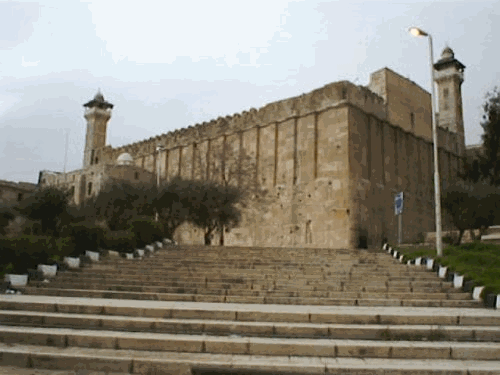The Cave of Machpelah is the world's most ancient Jewish site and the second holiest place for the Jewish people, after Temple Mount in Jerusalem. The cave and the adjoining field were purchased—at full market price—by Abraham some 3700 years ago. Abraham, Isaac, Jacob, Sarah, Rebecca, and Leah are all later buried in the same Cave of Machpelah. These are considered the patriarchs and matriarchs of the Jewish people. The only one who is missing is Rachel, who was buried near Bethlehem where she died in childbirth. The double cave, a mystery of thousands of years, was uncovered several years ago beneath the massive building, revealing artifacts from the Early Israelite Period (some 30 centuries ago). The structure was built during the Second Temple Period (about two thousand years ago) by Herod, King of Judea, providing a place for gatherings and Jewish prayers at the graves of the Patriarchs. This uniquely impressive building is the only one that stands intact and still fulfills its original function after thousands of years. Foreign conquerors and invaders used the site for their own purposes, depending on their religious orientation: the Byzantines and Crusaders transformed it into a church and the Muslims rendered it a mosque. About 700 years ago, the Muslim Mamelukes conquered Hebron, declared the structure a mosque and forbade entry to Jews, who were not allowed past the seventh step on a staircase outside the building. Upon the liberation of Hebron in 1967, the Chief Rabbi of the Israel Defense Forces, the late Major-General Rabbi Shlomo Goren, was the first Jew to enter the Cave of Machpelah. Since then, Jews have been struggling to regain their prayer rights at the site, still run by the Muslim Waqf (Religious Trust) that took control during the Arab conquest. Many restrictions are imposed on Jewish prayers and customs at the Tomb of the Patriarchs despite the site's significance, primacy and sanctity in Jewish heritage and history. Over 300,000 people visit Ma'arat HaMachpelah annually. The structure is divided into three rooms: Ohel Avraham, Ohel Yitzhak, and Ohel Ya'akov. Presently Jews have no access to Ohel Yitzhak, the largest room, with the exception of 10 days a year. Sources: Jewish Community of Hebron and other historical sources. |
